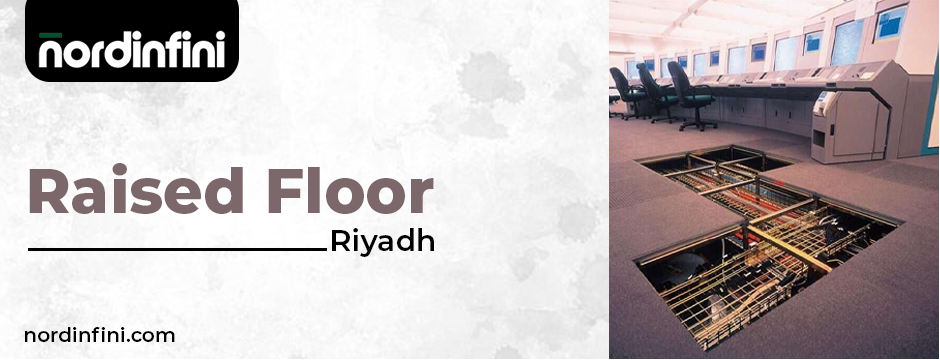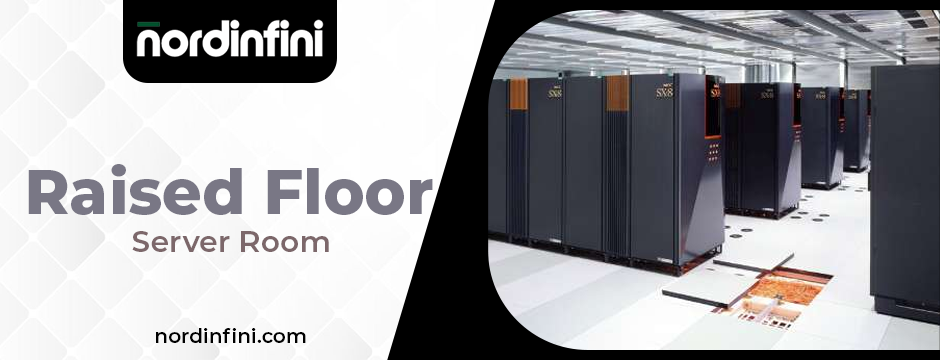Aesthetic Meets Functionality: How Raised Floors Redefine Modern Interior Design
Modern interior design is no longer just about aesthetics; functionality plays an equally important role in shaping spaces. The rising trend of integrating raised floors into interior design has revolutionized how architects and designers approach commercial and residential projects. With the perfect balance between practicality and elegance, raised floors provide solutions to modern challenges like cable management, HVAC efficiency, and space optimization while offering sleek, clean aesthetics. This blog explores how Raised Floor Riyadh is redefining modern interior design by blending visual appeal with functionality and creating versatile, efficient, and stylish spaces.
What Are Raised Floors?
Raised floors, also known as raised access flooring systems, are elevated platforms constructed above the subfloor using panels supported by adjustable pedestals. These panels, made of materials like steel, aluminum, or calcium sulfate, create a void between the base and the raised surface, providing a concealed space for mechanical and electrical installations.
Initially popular in IT and commercial spaces, raised floors are now becoming a key feature in interior design for various environments, including offices, data centers, retail spaces, and even residential areas.
The Growing Need for Raised Floors in Modern Design
Modern interiors require more than just visual appeal—they need to meet the demands of technology integration, energy efficiency, and evolving work environments. Raised floors address these needs effectively by:
- Improving Cable Management
Raised Floor Riyadh creates a dedicated space for running cables, wires, and pipes beneath the surface, keeping them hidden and organized. This eliminates clutter and ensures seamless connectivity in tech-heavy spaces. - Enhancing Accessibility
With removable panels, accessing underlying infrastructure for repairs or upgrades becomes quick and hassle-free. This accessibility makes raised floors a popular choice in dynamic environments like offices and retail spaces. - Facilitating HVAC Efficiency
The underfloor void can be used for HVAC systems, allowing better airflow distribution and energy efficiency. This approach minimizes the need for overhead ductwork, enhancing the room’s aesthetics. - Adapting to Future Needs
Raised Floor Riyadh offers flexibility, making it easier to accommodate future changes in technology or space layout.
Aesthetic Advantages of Raised Floors
Gone are the days when functional elements compromised design aesthetics. Raised floors now serve as a design tool to enhance the visual appeal of interiors in the following ways:
1. Sleek and Minimalist Designs
The concealed infrastructure provided by raised floors eliminates visible cables, pipes, and ductwork, creating a sleek and uncluttered environment. This minimalist look aligns perfectly with contemporary design trends.
2. Versatile Material Options
Raised floor panels are available in a variety of finishes, including wood, stone, glass, and luxury vinyl, allowing designers to match the flooring with the overall theme of the space. This versatility ensures that functionality does not overshadow the desired aesthetic.
3. Seamless Integration
Raised Floor Riyadh can seamlessly blend with existing design elements, whether it’s modern furniture, artistic decor, or creative lighting setups. Their adaptability makes them an integral part of cohesive interior design.

4. Enhanced Lighting Effects
Raised floors allow designers to integrate lighting solutions like LED strips or recessed lights into the flooring, adding a futuristic touch to the space while maintaining elegance.
Functional Benefits of Raised Floors
While aesthetics are important, the true strength of raised floors lies in their functionality. They redefine interior design by offering practical solutions to common challenges in modern spaces.
1. Improved Space Efficiency
The underfloor void created by raised floors maximizes space utilization, freeing up walls and ceilings for design elements. This feature is especially beneficial in small spaces where every inch counts.
2. Better Air Quality and Ventilation
Raised Floor Riyadh enhances air distribution by allowing conditioned air to circulate from below, ensuring a more uniform temperature across the room. This approach reduces the need for visible air conditioning units, contributing to a clean, open design.
3. Noise Reduction
The materials used in raised floor systems, combined with the underfloor void, help reduce noise transmission between floors. This is particularly advantageous in office settings or multi-story buildings.
4. Sustainability and Energy Efficiency
Many raised floor systems are made from eco-friendly materials, and their ability to optimize airflow reduces energy consumption. This makes them a sustainable choice for green building projects.
Applications of Raised Floors in Interior Design
Raised floors are no longer limited to IT hubs or commercial spaces; they are being embraced in diverse settings, showcasing their versatility.
1. Office Spaces
Raised floors are a staple in modern office design, where functionality meets aesthetics. They support dynamic layouts, facilitate technological integration, and ensure a professional appearance.
2. Retail Stores
In retail environments, raised floors create a polished look while hiding cables and HVAC systems. They also allow flexibility for store reconfigurations, ensuring a seamless shopping experience.
3. Data Centers and Server Rooms
While aesthetics may not be the primary concern in data centers, raised floors are essential for organizing cables, enhancing cooling efficiency, and ensuring easy access for maintenance.
4. Residential Interiors
Raised floors are finding their way into high-end residential projects, offering homeowners the benefits of concealed infrastructure and enhanced design flexibility. They are particularly useful in smart homes, where technology integration is key.
5. Exhibition and Event Spaces
In temporary setups like exhibitions or event venues, Raised Floor Riyadh provides a versatile platform that can be easily assembled, customized, and dismantled as needed.
Designing with Raised Floors: Tips for Success
To fully leverage the potential of raised floors in interior design, consider the following tips:
1. Choose the Right Material
Select floor panels that complement the space’s design theme. For example, use wood finishes for a warm and inviting look or glass panels for a modern, sophisticated vibe.
2. Plan for Accessibility
Ensure that the raised floor system is designed for easy access to the underfloor space. This includes using panels that can be easily removed without disrupting the overall design.
3. Incorporate Lighting Creatively
Take advantage of the underfloor space to integrate creative lighting solutions. LED strips or underfloor lighting can enhance the room’s ambiance while highlighting the raised floor’s design.
4. Focus on Durability
Invest in high-quality materials and finishes to ensure that the raised floor system can withstand wear and tear without compromising its aesthetics.
5. Consult Experts
Work with architects and interior designers experienced in raised floor installations to achieve the perfect balance of form and function.
Overcoming Common Concerns About Raised Floors
While raised floors offer a wealth of benefits, some concerns about their application and practicality can arise. Addressing these concerns proactively can ensure successful integration into any design project.
1. Maintenance and Upkeep
One common misconception about raised floors is that they require frequent maintenance due to the underfloor space. However, the opposite is often true. Regular inspections ensure the underfloor void remains clear, but modern systems are designed for durability and minimal upkeep.
2. Aesthetic Customization
Some worry that functional flooring systems might limit design flexibility. However, with the wide range of materials, finishes, and colors available today, raised floors can enhance the overall aesthetic. From wood and stone to luxurious vinyl finishes, there’s no shortage of options to align with your vision.
3. Integration with Existing Spaces
Adapting raised floors into existing structures might seem challenging, especially in retrofits. However, modular systems can be tailored to fit seamlessly, ensuring minimal disruption during installation and a cohesive appearance once complete.
By addressing these concerns head-on, designers and architects can maximize the potential of raised floors, ensuring they meet both functional and aesthetic goals.
Future Trends in Raised Floors for Interior Design
As interior design continues to evolve, raised floors are expected to play an even greater role in shaping modern spaces. Some emerging trends include:
- Smart Flooring Solutions: Integration with IoT (Internet of Things) for enhanced functionality, such as temperature control or occupancy sensing.
- Sustainable Materials: Increased use of recycled and eco-friendly materials in raised floor systems.
- Customizable Designs: Greater emphasis on personalized finishes and modular layouts to meet specific design needs.
- Multi-Functional Panels: Development of panels that combine multiple features, such as soundproofing, heating, and lighting integration.
Final Thoughts
Raised floors are no longer just a functional element—they are a design feature that enhances both the aesthetics and practicality of modern interiors. By offering solutions for cable management, ventilation, and noise reduction while providing sleek, customizable finishes, Raised Floor Riyadh has become a vital factor of contemporary interior design.

Nordinfini specializes in innovative raised access flooring solutions that seamlessly blend functionality with modern aesthetics. Designed to optimize cable management, accessibility, and space efficiency, our systems transform interiors into versatile, contemporary spaces. Trust Nordinfini to deliver superior solutions tailored to meet the demands of modern design and functionality. Whether you’re designing an office, retail space, or luxury home, integrating raised floors can transform the way you approach space planning and design. With the ability to blend seamlessly into any environment while addressing the challenges of modern living, raised floors truly redefine what it means to create stylish and efficient interiors. If you are looking for a raised floor server room, you must visit our website today!






